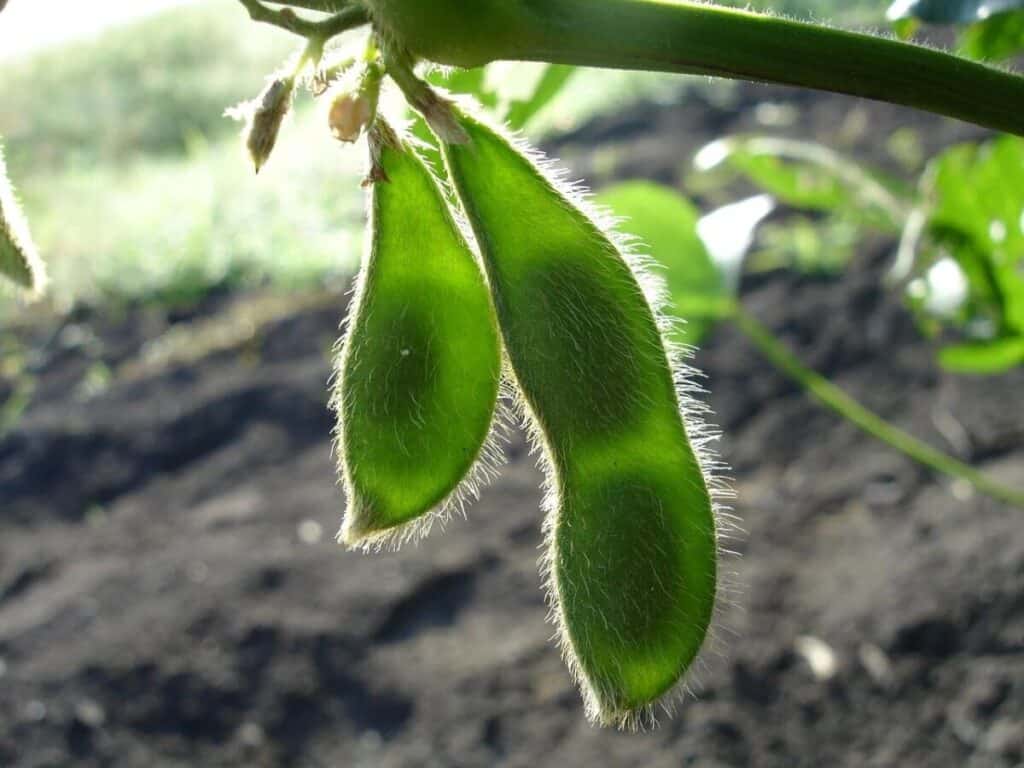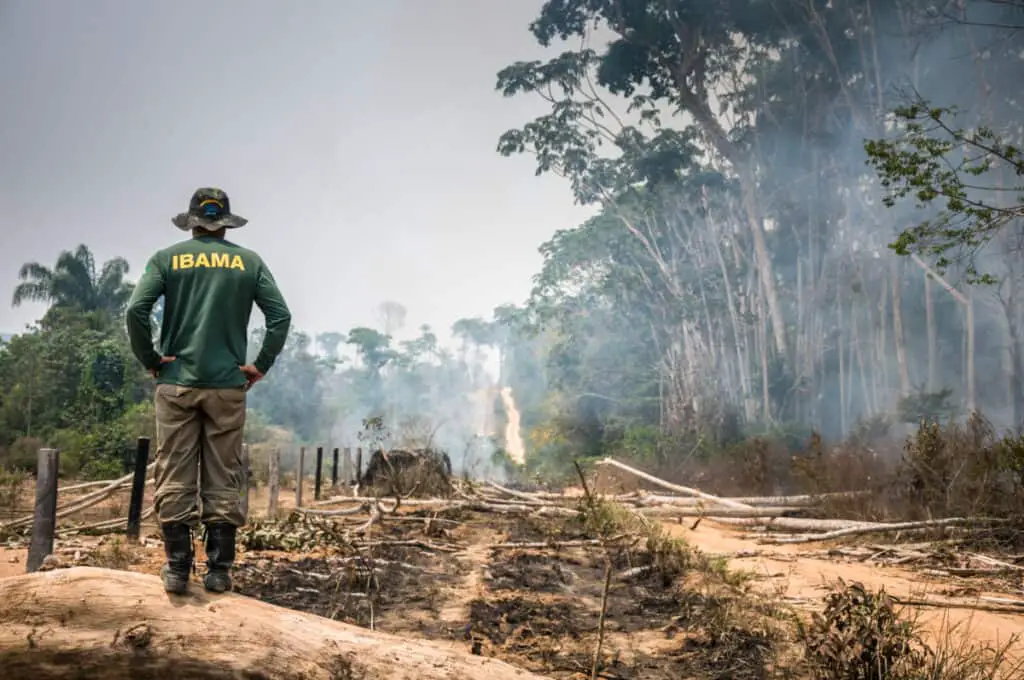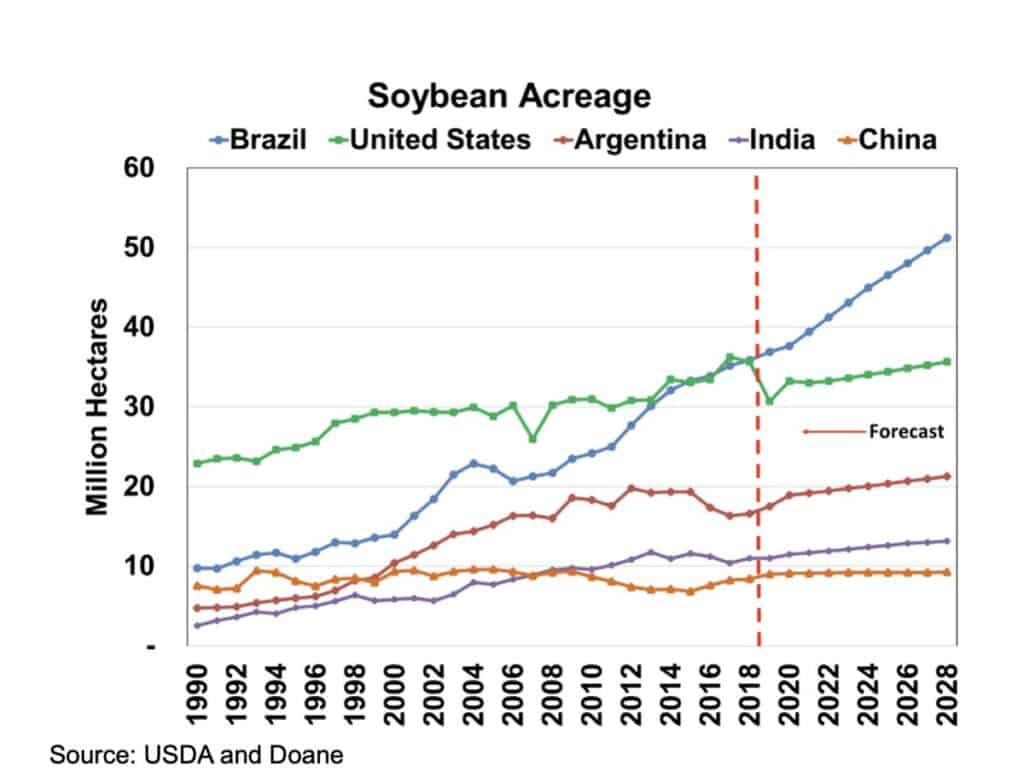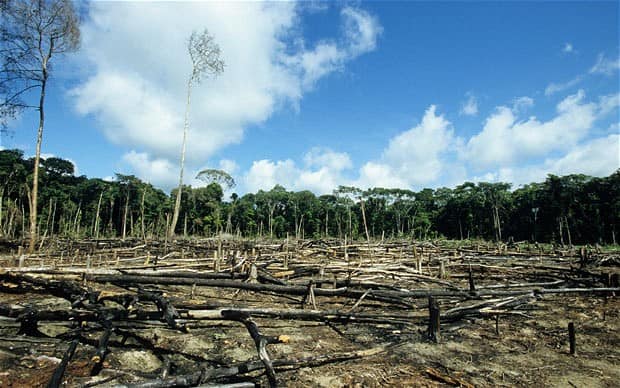On a recent cruise up the Amazon river, we witnessed firsthand the relentless deforestation of the Amazon rainforest. Our shore excursion to the rainforest meant hours of driving through large expanses of land that had been cleared to make way for agricultural use. The biodiversity of the Amazon is at risk, particularly in Brazil. I’ve written this article to help inform travellers to the region.
One of the biggest drivers of deforestation in the Amazon basin is the cultivation of soybeans. In Brazil, the area under soybeans has more than doubled from about 15 million ha in 2000 to roughly 37 million ha in 2020. 80% of soy grown in the Amazon is destined for animal feed with the rest used for oil or for human consumption. Travelers have a unique opportunity to discover firsthand how deforestation is driving the loss of biodiversity in the Amazon.
As travelers, the more we know, it seems, the more difficult it can be to make wise decisions and to act accordingly. Take, for example, the role of the lowly soybean in world affairs.
Most of us are big consumers of soybeans; directly or indirectly. Most processed foods are replete with soy “ingredients” and soybean oil. Much of our livestock, including beef cattle and chickens, are fed on soybean protein. There is likely a soybean in some form lurking near you now as you read this; they are ubiquitous in our modern world.
Soybeans can be useful in so many ways; they are nutritious with beneficial proteins and oils, and they help power our modern industries as biofuel.
On the other hand, growing soybeans can be incredibly destructive.
Why is the Amazon so Important?
The Amazon is unique and vitally important to all of us, because it:
- holds one fifth of all the fresh water in the world
- contains 53% of the Earth’s remaining tropical rainforest cover
- provides 20% of the oxygen we breathe
- is estimated to hold between 90-140 billion tons of C02
Why are Soybeans Integral to Understanding Climate Change?
By now, we’re all familiar with ongoing campaigns to support fair trade coffee and efforts to persuade coffee growers to provide shade grown, rainforest-friendly coffee beans. Now we have another – exceedingly less sexy – bean to keep an eye on.

But why concern ourselves to this degree over one humble legume… when entire ecosystems and life support systems are under threat across the world? Isn’t the role of the soybean rather minute in comparison to the massive climate crisis we face?
Given that the Amazon provides humans with 1 out of every 5 breaths we take, we can see that each and every one of us has a direct stake in maintaining biodiversity in what we might consider a region far-removed from our own.
One of the Most Destructive Crops: Soybeans
The bad news? Soybeans are one of the most destructive crops on the planet, responsible for deforesting vast swathes of South American rainforest. Scientists have developed a new variety of soybean that flourishes in rainforest climates and cerrado, a savannah ecosystem. Extensive areas of the Amazon rainforest and other sensitive South American ecosystems have been converted into industrial soybean farms, while the supporting infrastructure helps to accelerate deforestation.
Soy expansion is forecast to continue with detrimental impacts on biodiversity in Amazonian agricultural frontiers. Brazil has a competitive advantage because of low wages, poor worker protection, unregulated land use, corruption at all scales – so it can continue to provide feedstock at lower prices worldwide. Soy expansion is actively promoted in Brazil, largely driven by the interests of the agribusinesses sector and through government funded infrastructure improvements.
Large-scale soy production indirectly drives Amazon deforestation by way of new and improved roads. For example, soy growers lobbied for highway BR-163 which was built primarily to move soy from Brazil’s interior to market. It also gives illegal loggers, land thieves, and opportunistic ranchers access to the heart of the Amazon.

Drivers of Deforestation
Deforestation is linked to soy expansion into previously established pastureland, which acts to push cattle grazers further into the rainforest where land is less expensive.
In Brazil, large swathes of rainforest have already been logged to pasture cattle. When the soybean industry moves in and takes over these areas, the cattle firms quietly move elsewhere, deforesting new areas.
The purchase of pastureland can be an attractive investment for soy producers, since there’s no cost involved in clearing the forest and much of the land qualifies for government initiatives.
Consumers in Europe were so concerned that they pressured the big food chains to ban soy that was produced on illegally logged land. Greenpeace alleged that much of the feed used to fatten chickens for the fast-food chains is derived from soybeans grown in the Amazon. McDonald’s Europe and other chains were forced to stop buying soybeans from newly deforested land in protected regions of the Amazon.
Amazon Soy Moratorium Slowed Deforestation since 2006
The soy moratorium is a landmark collaborative effort signed in 2006 to prevent the purchase of soy from recently converted rainforest.
The Amazon Soy Moratorium (ASM) is the first major voluntary agreement in the tropics that aimed for zero-deforestation. Under the agreement, 90 percent of companies in the Brazilian soy market agreed not to purchase soy grown on land deforested after 2006 (later revised to 2008) within the Amazon biome. Secondly, it aimed to blacklist farmers using slave labor.
Since signing, the moratorium has been renewed every year, allowing for the signatories work on an effective long-term solution to take its place. In 2016 the soy industry agreed to make the ASM permanent.
Although evidence suggests that the Moratorium and land use policies helped to slow cropland expansion within the Amazon rainforests, it is a different story with another key biome, the Cerrado savannas. Since the ASM the Cerrado has experienced 2.5 times the destruction of natural vegetation compared to the Amazon biome.
Soybeans are Still a Threat to the Amazon
According to the USDA, Brazil likely overtook the United States as the world’s leading soybean producer in 2020.
- Area under soybean cultivation in 2019 estimated at a record 36.9 million hectares, up 1 million hectares or 3 percent from previous year.
- Brazil’s soybean production estimated at a record 123 million metric tons (mmt), up 6 million tons or 5 percent from the previous year.
- Yield estimated at 3.33 tons per hectare, up 2 percent from previous year.

Key Importance of an Ethic of Respect
If there’s one golden rule that will help humanity get through the years ahead it will be that of an Ethic of Respect; of learning to treat others as we ourselves would wish to be treated. Respect for one another, respect for other species, and respect for the planet. It boils down to a shared passion for life and respect for all life on earth.
The more complex the world becomes, the more difficult it is to make wise decisions and to act accordingly. Of course, this only holds true when we allow ourselves to act as isolated individuals holding all the answers! When we confront our new reality and work together, we can co-create integrative solutions for even the biggest, impossible-to-solve problems.
Where Do Informed Travelers Fit In? By Creating Awareness
This is one compelling reason why the journeys and insights of informed and attentive travellers become so vital. Informed travel helps us to make sense of, and to marvel in, the complexities of our natural environment and humanity’s overwhelming influence on our planet.
It comes down to an optimistic and passionate reverence for life! And by life – I don’t mean that of a party animal – I mean life in all its wondrous forms, from snakes and beetles to primates and pangolins.
Our future hinges on our ability to recognize the world as it is (not as those with vested interests try to befuddle and deceive us into believing) and to collaborate with one another to co-create new, and often totally radical, solutions.
The Soya Moratorium is one example of a big step forward. But we need many more such steps on our path to a sustainable future, and it begins with citizens who care.
Soybeans are Part of an Interconnected Web
Like all such stories, the soybean in South America is one thread of an interconnected web encompassing our entire planet. It is becoming patently obvious that the world is becoming too complex and the challenges too daunting for any one individual to get a handle on it all.
Personally, I find solace and encouragement in the knowledge that, as we strengthen our connections as a global community and learn to collaborate, the light of public scrutiny and civil society is increasingly likely to shine into every corner of human practice, including global trade and commerce….and, of course, soybean production.
Personal Story About the Importance of Passion and Optimism
I learned a valuable lesson about optimism, passion and adventure on a river, amazingly, called the Rio de la Pasión flowing through the isolated jungles of Guatemala.
Many years ago, when I was in my twenties, two friends and I caught a ride on a supply canoe carrying provisions to the tiny villages upriver. Roughly halfway to our destination, in a tiny settlement called El Pato, the captain informed us that this was his last stop, and he was turning around. El Pato means duck in Spanish; we suddenly found ourselves facing the prospect of being “stuck in the duck.” A young couple from the U.S. had already been stuck for more than a month!
We could have easily become overwhelmed by this turn of events and resigned ourselves to our fate. Instead, we chose to face our new reality and to continue to pursue our adventure with passion… we started bargaining to buy our own dugout canoe. We never paddled a stroke. The first boat going our way in over a month arrived and we managed to continue our journey by motor canoe.
Things just seem to work out when we treat life as an adventure in search of creative solutions and treat one another with respect.
Interested in the Amazon rainforest? See our tips on how to see more wildlife in the Amazon
References
Branford, Sue and Maurício Torres 2017. Amazon Soy Moratorium: defeating deforestation or greenwash diversion? Mongabay.com https://news.mongabay.com/2017/03/amazon-soy-moratorium-defeating-deforestation-or-greenwash-diversion/
Brown, J. Christopher & Koeppe, Matthew & Coles, Benjamin & Price, Kevin. 2005. Soybean Production and Conversion of Tropical Forest in the Brazilian Amazon: The Case of Vilhena, Rondônia. Ambio. 34. 462-9. 10.1639/0044-7447(2005)034 [0462:SPACOT] 2.0.CO;2.
Yale School of the Environment, Global Forest Atlas. Soy Agriculture in the Amazon Basin.
Zalles, Viviana, Matthew C. Hansen, Peter V. Potapov, Stephen V. Stehman, Alexandra Tyukavina, Amy Pickens, Xiao-Peng Song, Bernard Adusei, Chima Okpa, Ricardo Aguilar, Nicholas John, Selena Chavez, 2019. Near doubling of Brazil’s intensive row crop area since 2000. Proceedings of the National Academy of Sciences Jan 2019, 116 (2) 428-435; DOI: 10.1073/pnas.1810301115
Online Resources:
- Exciting new collaborative approaches to solving difficult problems:
www.co-intelligence.org

